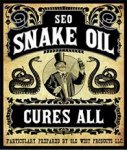How Does it Work?
Organic pollution is constantly being introduced into yout pool from leaves, swimmers and other matter.
Organic matter can cause algae and cloudy water.
The Water Cleanser helps healthy microbes to breed and decompose organic matter rapidly. Your water will remain healthier and clearer.
Does it stop algae?
Algae requires two elements to survive, sunlight and organic waste.
The Water Cleanser starves algae of its food source, organic waste.
Therefore in most cases, the algae will disappear. However some algae that sticks to pool walls require sunlight only. These will need a little chlorine to remove.
Will it work with Ultraviolet (UV) lighting system?
No. UV lighting systems work by killing all forms of bacteria and microbes (even the good ones).
The UV light will kill the beneficial microbes needed to eat the organic waste in your water, making The Water Cleanser ineffective.
Will it affect my chemical usage?
Yes it will. Testimonials and tests show us on average most pool owners can cut their chemical additives significantly and drop down their pump time. Each pool will have a different set of variables.
Note that chlorine or another sanitizing method is needed to protect your pool from pathogens such as amoebae or human-borne bacteria which can cause disease. This is absolutely critical in a public pool.
Can I go chemical free?
No. Your pool must have a degree of chemical use, as there are laws governing pool maintenance, that include mandatory chemical use for the control of diseases. Also, if your pool is completely natural you effectively have a pond. Mother nature will come and inhabit your pool (ie frogs and tadpoles). Also some leaves stains and algae require chlorine to eradicate them.
Please read out testimonials to discover the reductions in pump and chemical use achieved.
How often do I need to change The Water Cleanser?
It is imperative that you replace your product as per the timing specified on the packaging, otherwise you will break the breeding cycle of the microbes. The recommended lifespan is 3 months for the balls and 6 months for the 1kg block.



